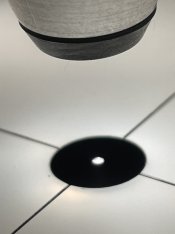dkonigs
Subscriber
Derek,
If you made a device that didn't switch mains (the enlarger), would you be able to ship it without having to go through all the regulations? This is such a great project and I'm thinking if the device only sent pwm signal or serial data (usb) to another simple small device that would actually do the switching...an arduino keeping it open source and easy to build. So we could actually buy the main device (the brain) from you and build the small one (great project for high school electronics/photography/"steam"). Then of course release, when all is clear, a fully functional device for the ones who want an all in one solution.
I'd still have to go through some regulations, but its my understanding that the process would be a lot simpler. Honestly, I really just need to find some sort of consultant to help walk me through this stuff (and I'm not entirely sure where to find one) rather than go simply off assumptions and hearsay.
The issue is that "just plugs into mains" really is the best choice for most users. The exception to that is people who want to control some sort of custom LED head, but even they likely still need a mains plug for controlling their safelights. (And yes, automated safelight control is a useful feature here. It makes it easier to not have them interfere with meter probe measurements.)
I am dead set against coming up with some sort of completely custom interface you'd need to kludge your own electronics project to use. (i.e. every single "Just use PWM" or "Just have some simple voltage output" suggestion.)
However, there is a standard for doing this that I have begun to explore. That standard is DMX512. While technically designed for "stage lighting," its a mature standard with tons of supporting hardware. You can literally just go on Amazon (or eBay, or AliExpress) and simply buy off-the-shelf relay boards and LED controllers that can speak it. You can also obviously build your own board that can handle it too, and there are reference designs out there to start from (or I could even provide one).
The main problem with DMX512, however, is that no one seems to make a simple "cheap enclosed box /w 1-2 switched outlets" as an off-the-shelf product. While you absolutely could build one by wiring together existing parts, you can't just buy one as a complete product. The closest you can find are these 4-channel beasts (bigger than the Printalyzer box itself) in the $150-200 range, or fancy 1-channel dimmers (covered with LEDs you'd need to tape over) for just as much money or more.
The secondary problem is that you'd need to provide a separate power supply for any DMX512 relay "contraption,", so there would be a tangle of power adapters behind all of this.
Of course it is tempting to consider just having a DMX512 output, and make that "simple switched outlet box" as a separate product.





 , we want the printalyzer !
, we want the printalyzer !
